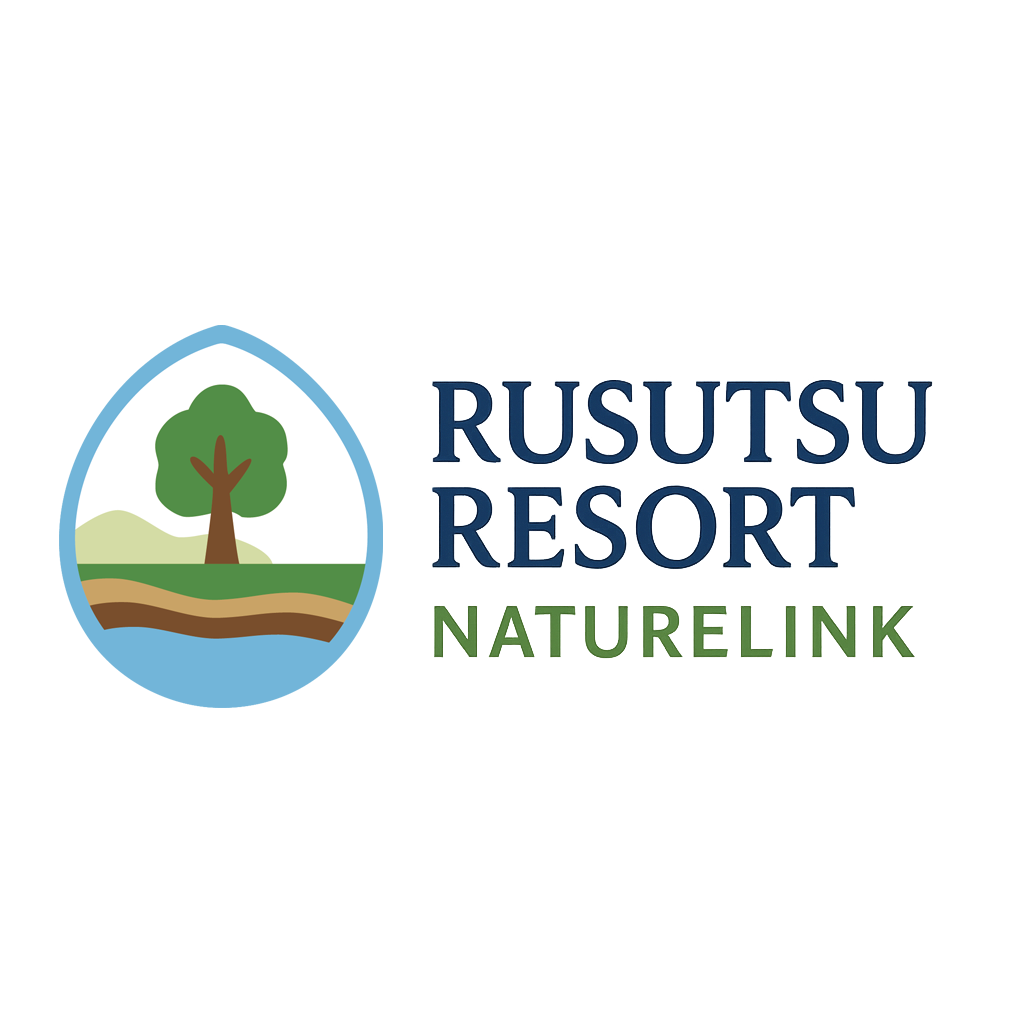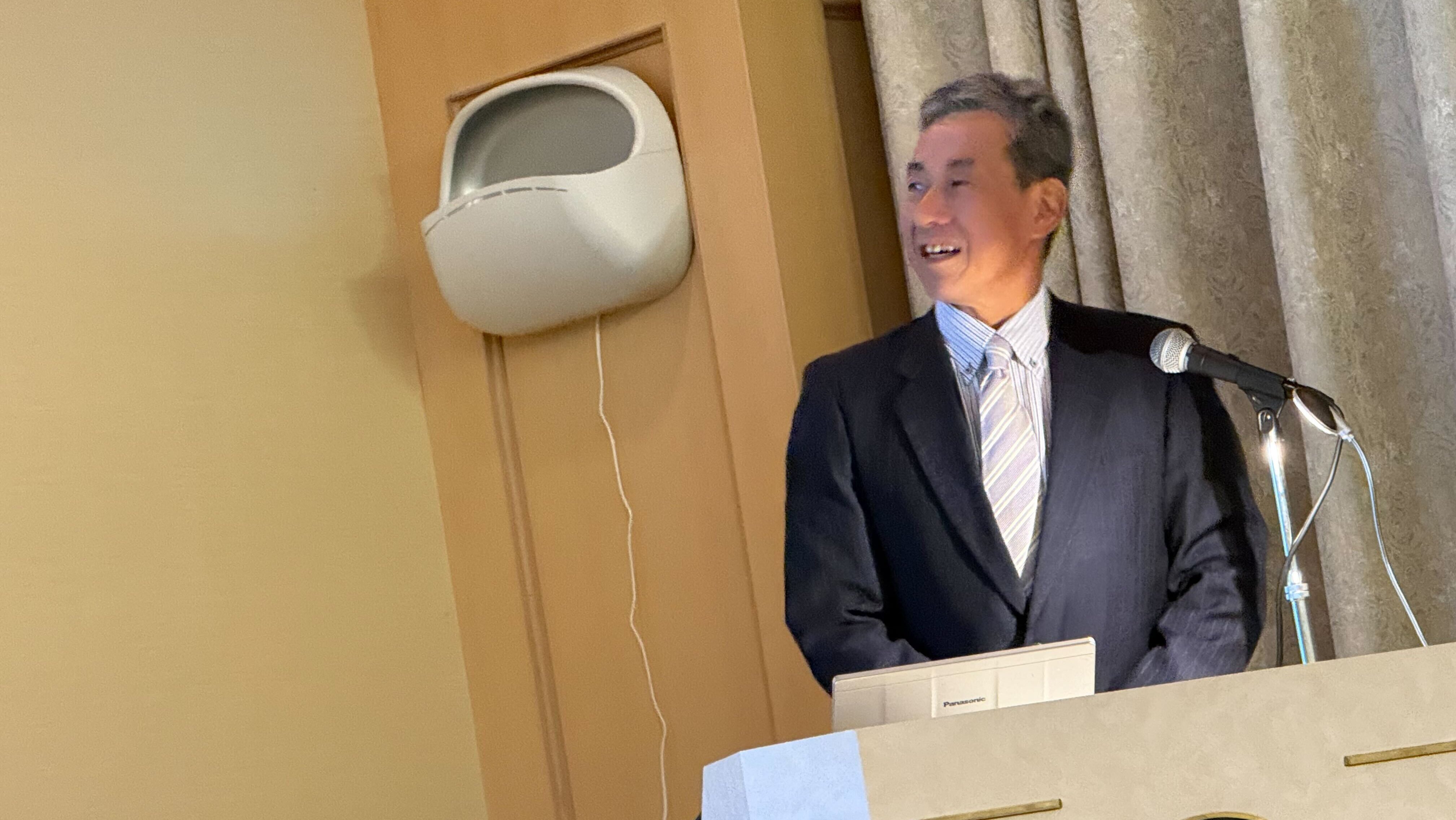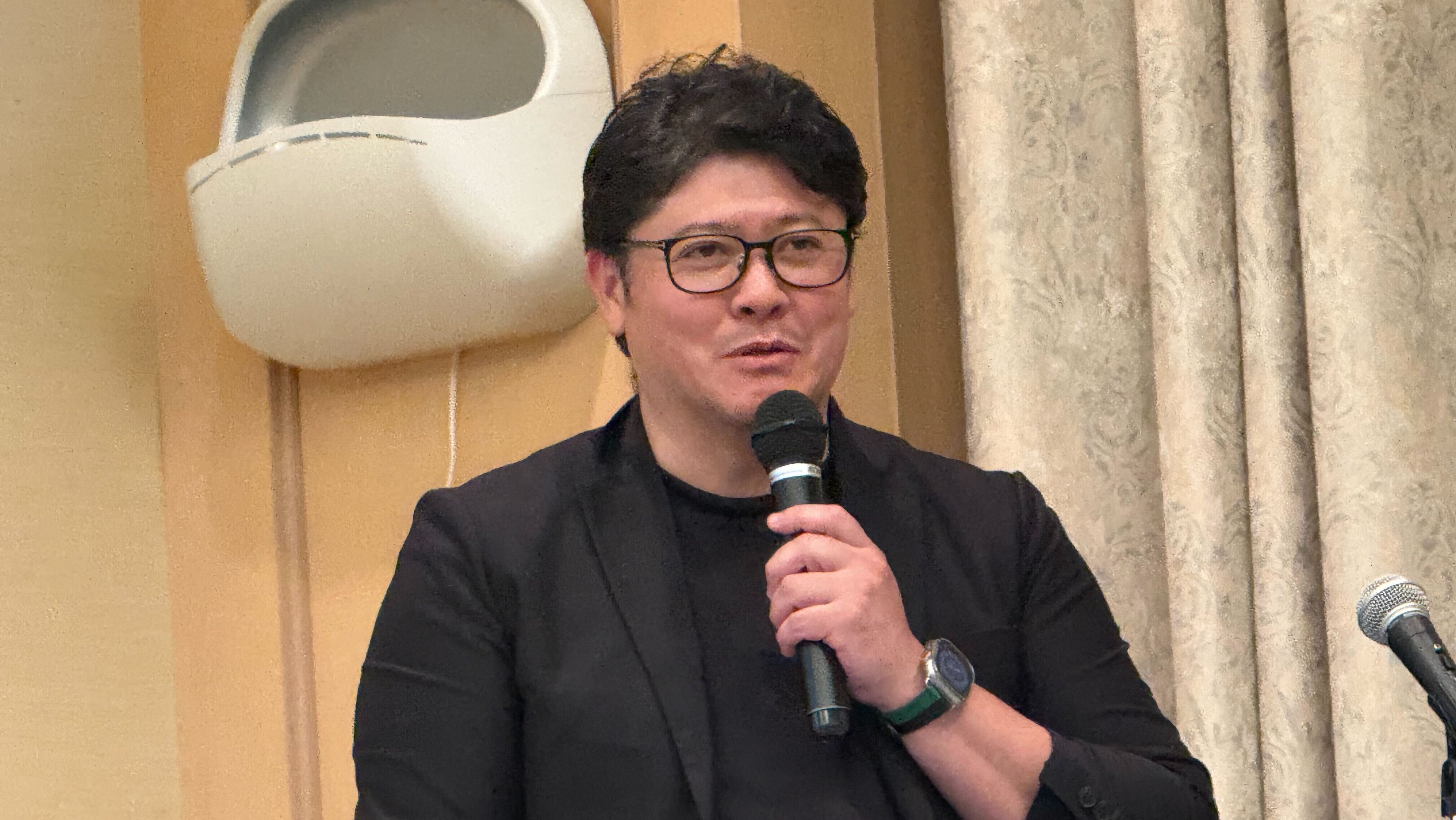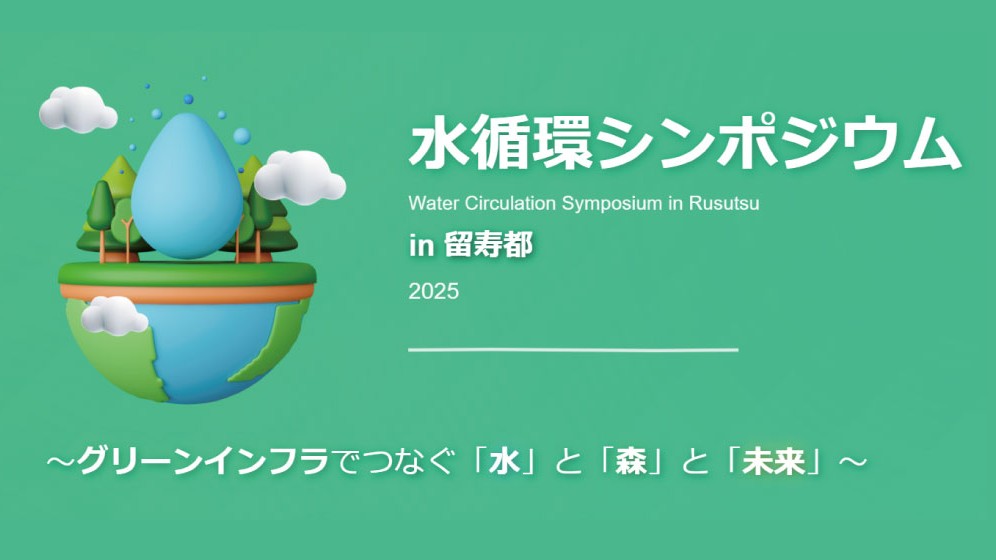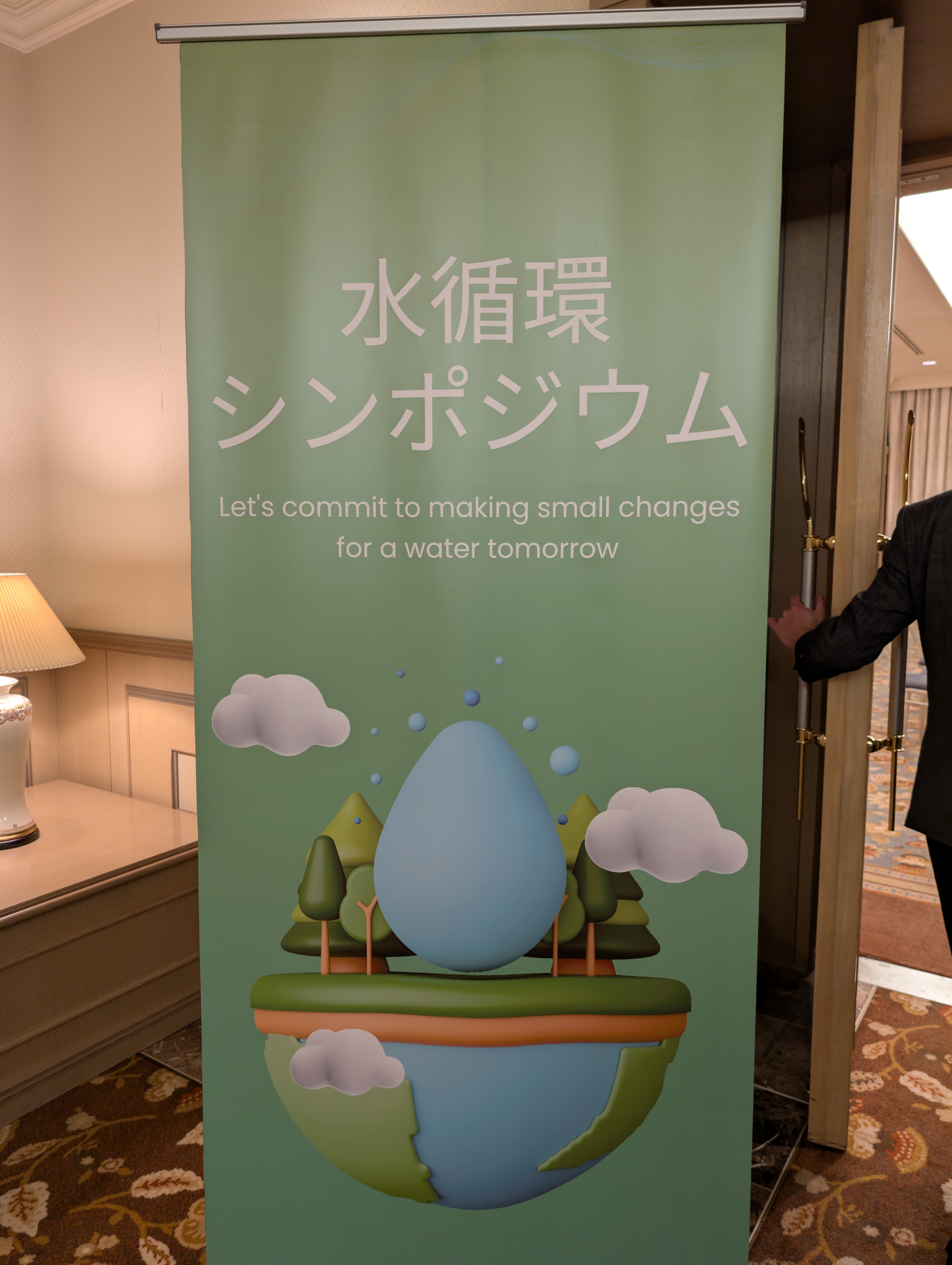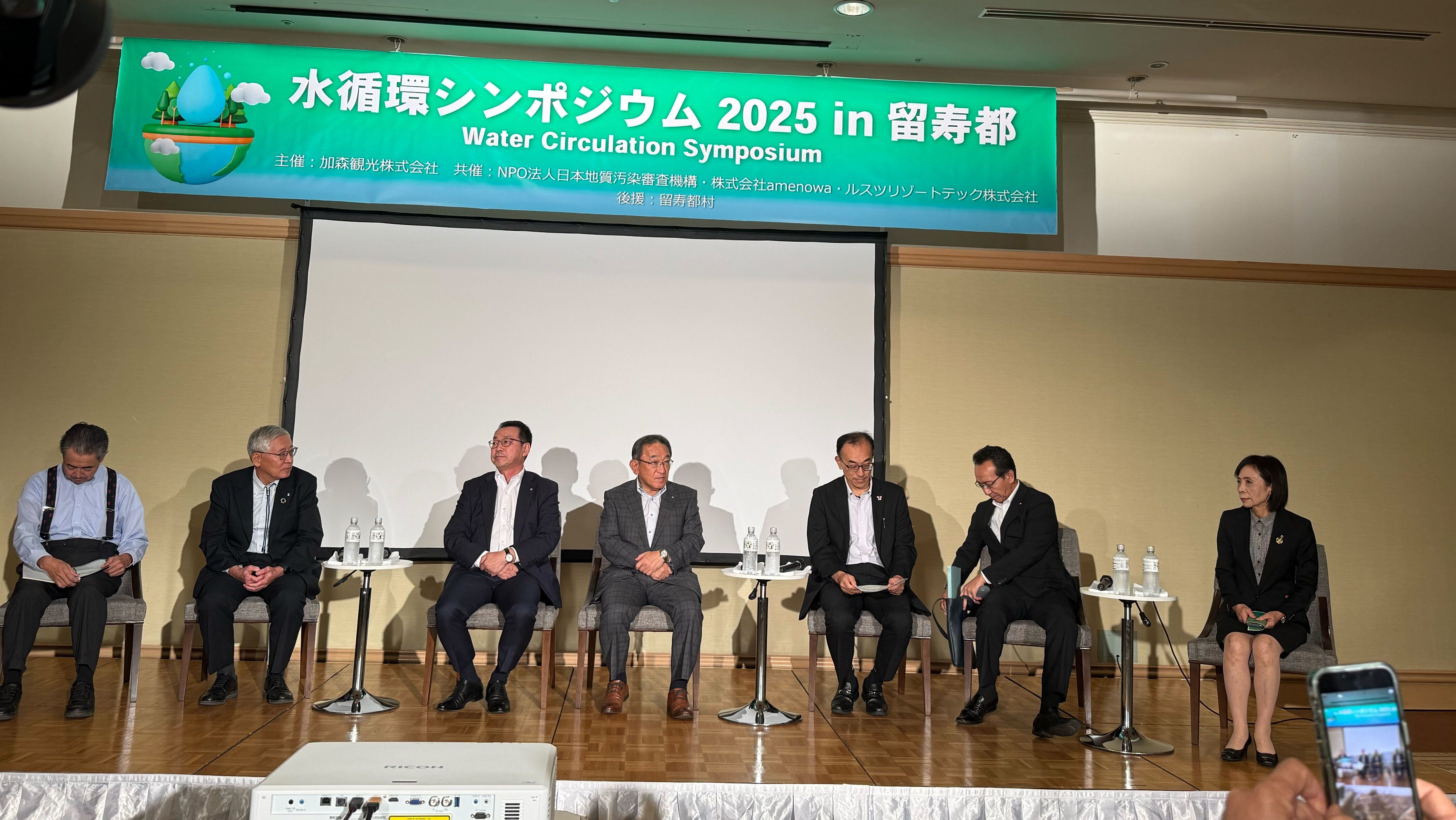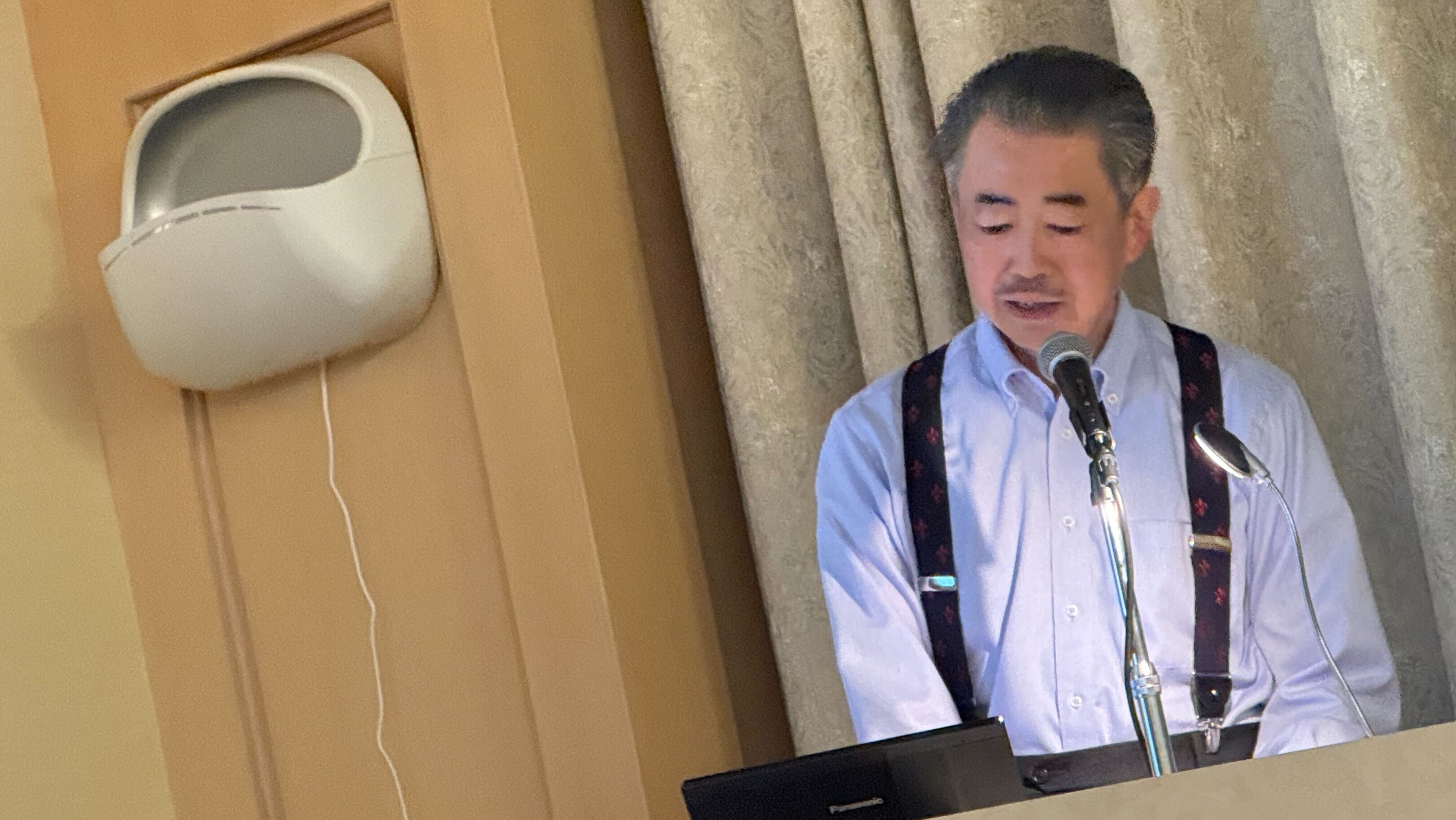How Do We Get “Water, People, and Living” to Turn as One?
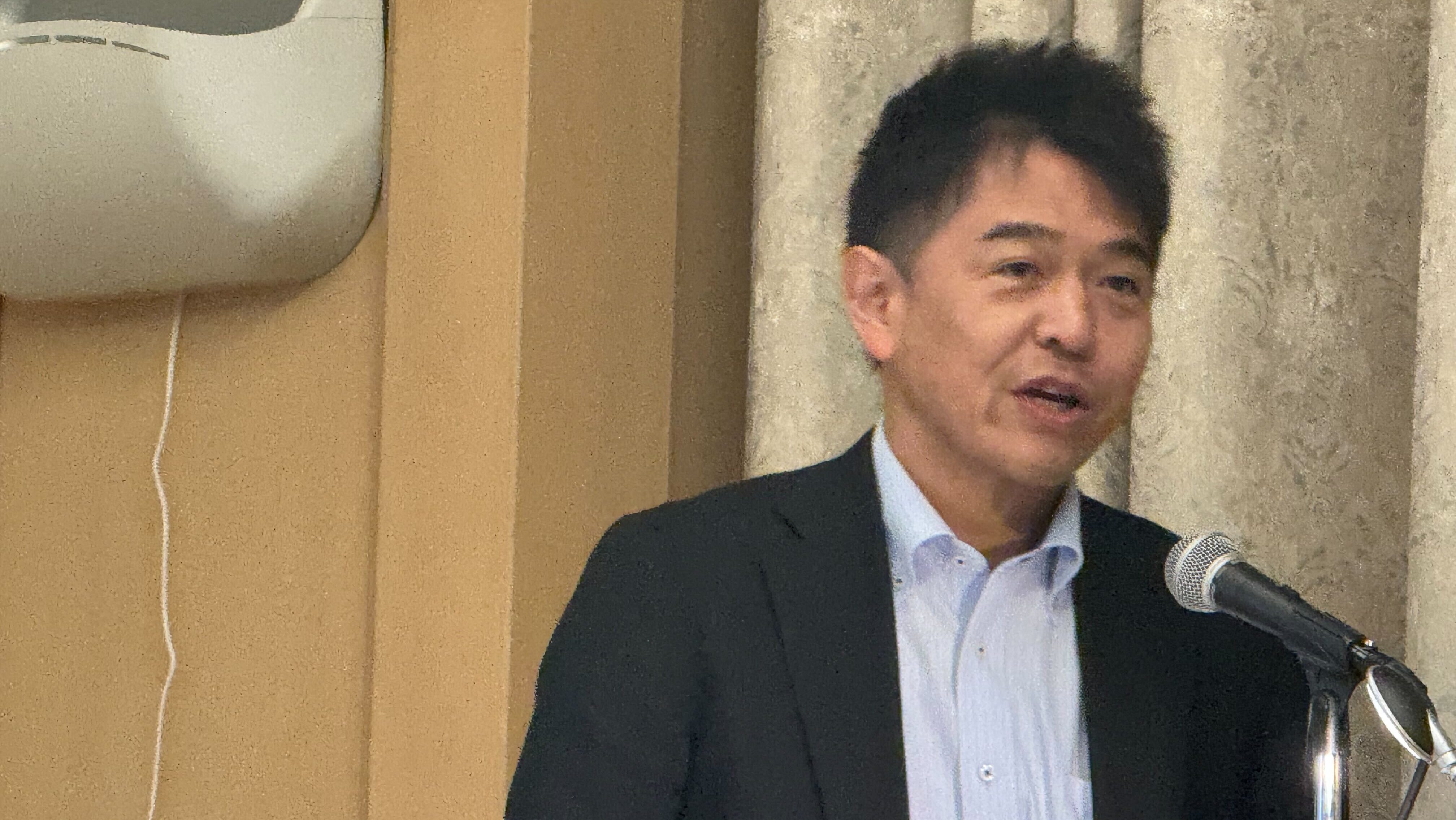
A Gentle Lecture on Water Circulation by MLIT’s Seiji Amano (Lecture Report)
「“Today I’ll start with water circulation, then connect it to economic circulation—and finally to the circulation of people.”
Mr. Seiji Amano, Cabinet Secretariat Counsellor at Japan’s Ministry of Land, Infrastructure, Transport and Tourism (MLIT), unraveled a difficult theme from an everyday-life perspective. Far from a stiff policy talk, it felt tangible and lived-in—packed with hints we who live in the regions should know.
First, know “Japan today”: not just how many people, but where they live is shifting
- Japan’s population peaked around 128 million in 2008. It is now declining, with projections of about 100 million around 2050.
- What matters is the imbalance between places losing and places retaining population. For example, Hokkaido is forecast to shrink from 5+ million to 3+ million.
In towns under 10,000 people, “nice-to-have” services like cinemas or department stores become hard to sustain (the so-called “Starbucks chart” story). Securing shopping and secondary transport becomes central to daily life.
In short, it’s not that the raw number of people will “bounce back”; it’s that where people live is rebalancing. The challenge is how to support everyday services across an area, not just point by point.
Bringing water circulation “down to daily life”
In recent years we’re seeing more extremes: intense downpours in some places while overall rainfall is scarce. As population declines and water use patterns change, water and sewer infrastructure can deteriorate more easily. We must prepare for both flooding and drought.
The key, therefore, is to measure.
- The Basic Act on the Water Cycle (2014) made a sound water cycle a national policy.
- In 2021, groundwater management was explicitly incorporated—visualizing groundwater levels and volumes to use them wisely.
- The 2024 Noto Peninsula earthquake exposed the fragility of water infrastructure, underscoring the need for preparedness in normal times.
“If you don’t measure, you can’t verify—good or bad.”
Data becomes the foundation for building local consensus.
Think “across the entire basin”: flood control × water use × natural environment
Optimizing just rivers or just water/sewer systems is hitting its limits.
Mr. Amano advocates integrated basin water management—planning flood control, water use, and environmental conservation together across the whole watershed.
That, in turn, requires a better balance of self-help, mutual help, and public help, plus coordination beyond silos.
Enlist the power of companies and forests: more “entry points” to join
- MLIT is promoting corporate-led forest creation, with a quantitative method to evaluate water-source recharge (groundwater fostering capacity) slated for publication within this fiscal year.
→ We’ll be able to explain how much water forests retain—in numbers. - MLIT launched the Water Circulation Corporate Registration & Certification System (FY 2024).
→ Already 89 companies registered; 10 have “challenge” registrations. The logo may be used, making corporate practices visible.
It’s no longer just researchers and municipalities: companies and citizens are getting structured ways to participate.
Creating the circulation of people: the option of “dual-region living”
Rather than competing over permanent migration, increase the flow itself—the comings and goings.
Legal groundwork is progressing, and the promotion of dual-region living is moving into full swing.
Three challenges: housing, livelihoods, and community.
Concrete steps:
- Renovating and utilizing vacant homes
- Improving connectivity for remote work
Creating gathering places and invitational mechanisms for community - Already 40+ regions are trying this nationwide, with a national platform involving 700+ municipalities and 300+ companies/organizations up and running.
- Near our venue, Rankoshi and Kutchan are already on board (with a hopeful nudge for Rusutsu to join).
MLIT is also considering a “hometown resident registration” scheme.
If dual-region residents can be identified via an app, local rules (e.g., garbage disposal) and community point systems can be administered more smoothly.
Don’t shoulder it alone: the idea of a “regional life sphere”
This is not about forced mergers; it’s about multiple municipalities collaborating to maintain everyday services across boundaries.
With help from private operators and NPOs, regions can support shopping, mobility, medical care, welfare, and education across jurisdictions.
Related leading projects are underway; Hokkaido already has multiple adoptions—more opportunities lie ahead.
Summary: start small, and spin the cycle together
Mr. Amano’s points all invited us to make it our own:
- Measure first (groundwater, flows, and usage)
- Optimize at the basin scale (flood control × use × environment)
- Broaden participation by forests, companies, and citizens (with policy support)
- Increase movement (dual-region living to create a circulation of people)
- Support services across towns (the regional life-sphere approach)
Peace of mind in daily life—and vibrant local economies—grow when the circulations of water, people, and the economy turn together.
The hard parts become doable when we measure → share → trial small. With participation mechanisms, communities become stronger and more resilient.
When the talk ended, I found my hands wanting to act: What can we measure in our own town? Who can we partner with?
It was that kind of nudge-forward lecture.
